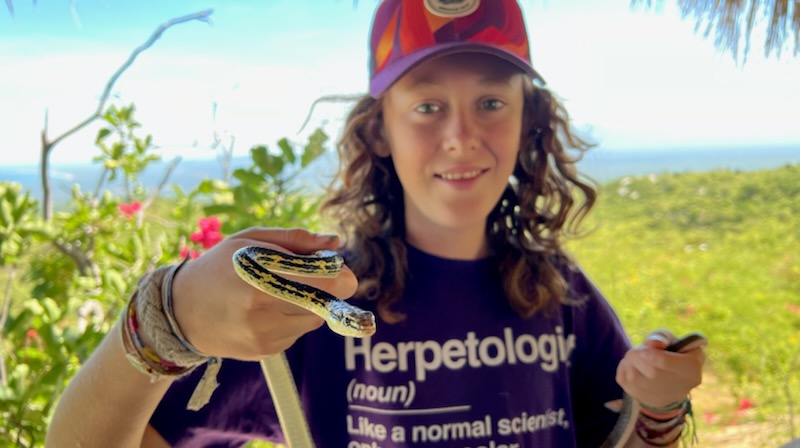
The Cape Striped Whipsnake (Masticophis aurigulus) is one of the rarest snakes in Baja California Sur. This elusive serpent is found mostly in the mountains in the center of the peninsula, as it likes wetter, greener areas. However, I have received a few reports of white-striped black snakes quickly slithering across paths nearby La Ventana, giving me reason to believe that striped whipsnakes may be closer than we think.
A few months ago, I had the good fortune of spending time in the field with Brad Hollingsworth Ph.D., the Curator of Herpetology for the San Diego Natural History Museum. He was on a trip to Baja starting work on a reptile survey at Rancho Ancon. We checked traps, designed to catch reptiles in an unharmed fashion, and found many interesting reptiles and amphibians that included sand snakes, whiptails, toads and more. Everything was released after being weighed and measured.
When we came up to a particular trap situated in an arroyo surrounded by thick greenery, I was extra excited, as it was placed in a location considered ideal for the elusive San Lucan Alligator Lizard, one of my biggest targets in Baja. We came upon the first trap of the set. Each set had two above-ground traps and a bucket trap. One of the traps had a small whiptail inside and we started the measuring process. I decided not to look in the direction of the other traps to keep it a surprise. After the suddenly excruciatingly long process, we moved on to the bucket trap. I believe it had a small toad inside, so we started the process again. Finally, it was time to move on to the best-looking trap.
Another very nice scientist on the expedition, Marco, was the first to exclaim: “There’s a big snake in this one!” I then almost hit the speed of sound. Right there, before my eyes, was a large, beautiful Cape Striped Whipsnake.
The Cape Striped Whipsnake is closely related to the coachwhip, a snake commonly found around La Ventana and which I wrote about in my first column. These snakes share a diet of mostly other reptiles, but birds, bird eggs, rodents and amphibians are also eaten. The Cape Striped Whipsnake likes to climb and, if you are lucky enough to see one, it will likely be in a bush or tree.